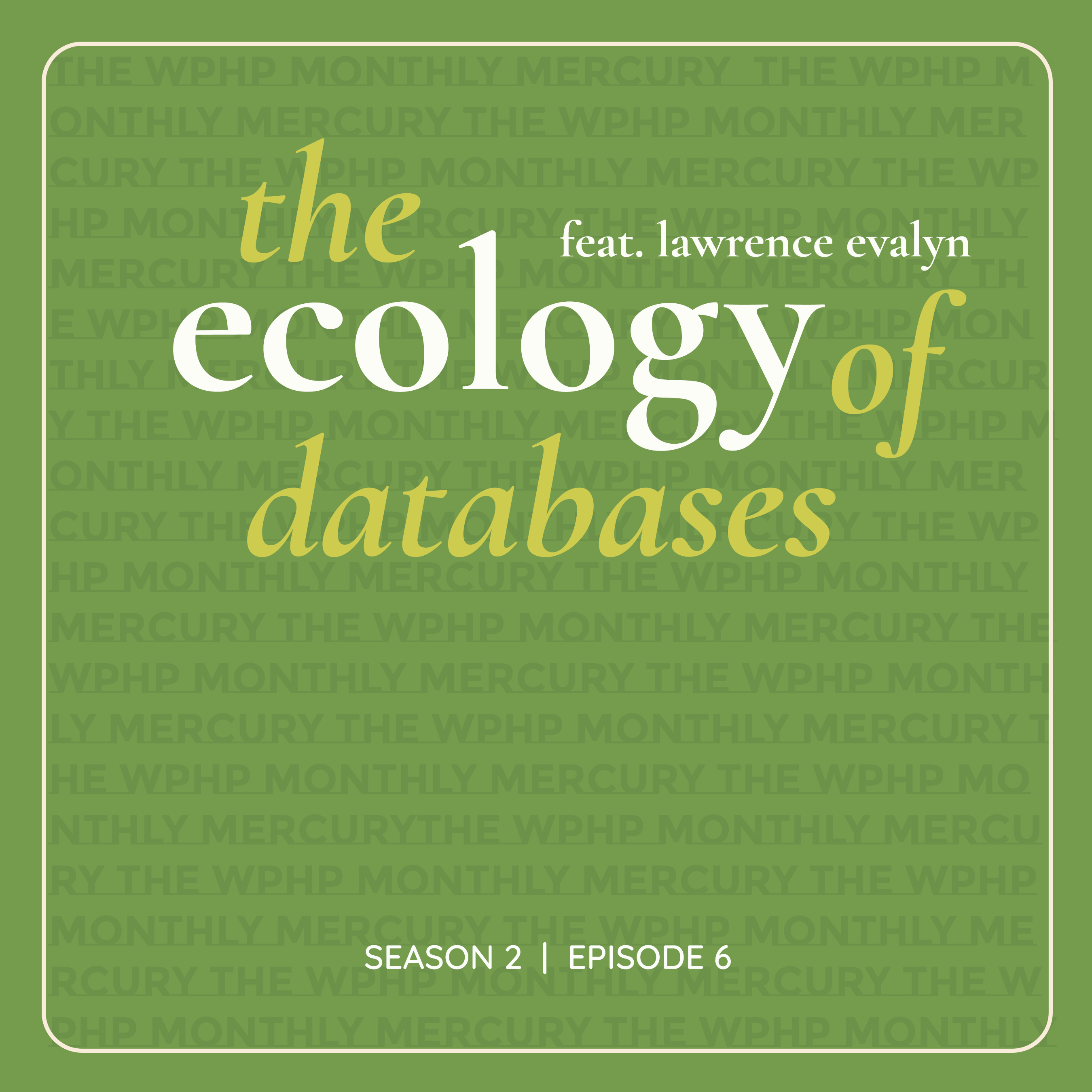You can listen to Episode 6 of Season 2 of The WPHP Monthly Mercury, "The Ecology of Databases", on Apple, Spotify, Stitcher, Google Podcasts, and other podcast apps, available via Buzzsprout.
Why hasn’t the third edition of Hannah More’s Coelebs in Search of a Wife been digitized? Why doesn’t Google Books group the different volumes of multi-volume works together in a single catalogue record? And, what do authors and pandas have in common? We bemoan the limitations of our various sources on a monthly basis, but this month we’re digging into why they exist in the first place—especially why digitization can be so uneven.
In Episode 6 of Season 2 of The WPHP Monthly Mercury, “The Ecology of Databases,” co-hosts Kate Moffatt and Kandice Sharren are joined by Lawrence Evalyn to learn more about the issue of uneven digitization. In addition to giving us the hard numbers about which titles appear in the ESTC, ECCO, The Text Creation Partnership, and HathiTrust, Lawrence puts forward his "charmismatic megafauna" theory of authorship, shares moon prophecies and invitations to meetings about waterway management, and details the searching strategies he used during the WPHP Summer Readathon.
Lawrence Evalyn is currently a "pre-doc postdoc," both a Ph.D Candidate and a Teaching Postdoctoral Fellow in English at the University of Toronto, where he is affiliated with the Digital Humanities Network and the Data Sciences Institute. His dissertation, "Database Representations of English literature, 1789-99," measures and historicizes uneven digitization in four resources to examine how digital infrastructure shapes eighteenth-century studies, especially the study of women's writing. His collaborative digital humanities publications include "One Loveheart At A Time," an article on emoji in Digital Humanities Quarterly. He holds a Masters in English from the University of Victoria, where his M.A. essay, supervised by Robert Miles, looked for large-scale trends in late eighteenth century Gothic novels.
Credits
Produced by: Kandice Sharren, Kate Moffatt, and Michelle Levy
Mixed and mastered by Alexander Kennard
Music by: Ignatius Sancho, “Sweetest Bard”, A Collection of New Songs (1769) from https://brycchancarey.com/sancho/bard.jpg, and played by Kandice Sharren
WPHP Spotlights Referenced
The Woman of Colour: Don't Break the (Attribution) Chain
WPHP Records Referenced
The Woman of Colour (title)
Selections from the Letters, &c. of the late Miss Carter (title)
Tales Original and Translated from the Spanish. By a Lady. (title)
WPHP Sources Referenced
Hathi Trust Digital Library
Eighteenth Century Collections Online
English Short Title Catalogue
Google Books
Works Cited
D’Ignazio, Catherine and Lauren F. Klein. Data Feminism. MIT Press, 2020.
Dominique, Lyndon J. “Introduction.” The Woman of Colour, Broadview Press, 2008, pp. 11–42.
Evalyn, Lawrence. ”What Does Author Metadata Tell Us?: Counting English Women Writers in Four Eighteenth-Century Databases.” Unpublished.
Evalyn, Lawrence, C.E.M. Henderson, Julia King, Jessica Lockhart, Laura Mitchell, and Suzanne Conklin Akbari. “One Loveheart at a Time: The Language of Emoji and the Building of Affective Community in the Digital Medieval Studies Environment.” Digital Humanities Quarterly, vol. 14 no. 3, 2020.
Garside, Peter. ‘The English Novel in the Romantic Era: Consolidation and Dispersal’. The English Novel, 1770–1829: A Bibliographical Survey of Prose Fiction Published in the British Isles, edited by Peter Garside et al., vol. 2, Oxford UP, 2000.
Griffin, Robert J. “Fact, Fiction, and Anonymity: Reading Love and Madness: A Story Too True.” Eighteenth Century Fiction, vol. 16 no. 4, 2004, pp. 619–38.
Jockers, Matt. Macroanalysis: Digital Methods and Literary History. University of Illinois Press, 2013.
Levy, Michelle and Mark Perry. “Distantly Reading the Romantic Canon: Quantifying Gender in Current Anthologies.” Women’s Writing, vol. 22 no. 2, Apr. 2015, pp. 132–55.
Moretti, Franco. Distant Reading. Verso, 2013.
Riddell, Allen and Troy J. Bassett. “What Library Digitization Leaves Out: Predicting the Availability of Digital Surrogates of English Novels.” Portal, vol. 21 no. 4, 2021, pp. 885–900.
Further Reading
Bode, Katherine. A World of Fiction: Digital Collections and the Future of Literary History. U of Michigan P, 2018.
Cope, & Leitz, R. C. Textual studies and the enlarged eighteenth century: precision as profusion / edited by Kevin L. Cope and Robert C. Leitz, III. Bucknell University Press ; Rowman & Littlefield, 2012.
Gregg, Stephen H. Old Books and Digital Publishing: Eighteenth-Century Collections Online. Cambridge UP, 2021.
Harol, Corrinne, Brynn Lewis, and Subhash Lele. “Who Wrote It? The Woman of Colour and Adventures in Stylometry.” Eighteenth-Century Fiction, vol. 32 no. 2, 2020, 341–53.
Klein, Lauren. “Distant Reading After Moretti.” Arcade: Literature, the Humanities, & the World, 2018, arcade.stanford.edu/blogs/distant-reading-after-moretti.
Spedding, Patrick. “‘The New Machine’: Discovering the Limits of ECCO.” Eighteenth-Century Studies, vol. 44 no. 4, 2011, 437–53.
Underwood, Ted. Distant Horizons: Digital Evidence and Literary Change. U of Chicago P, 2019.
This podcast draws on research supported by the Social Sciences and Humanities Research Council.

